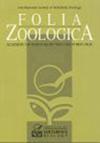农业地区金豺和同域红狐的饮食组成(匈牙利)
Q2 Agricultural and Biological Sciences
引用次数: 25
摘要
摘要为了更好地了解金豺(Canis aureus)的生态学和食肉动物的种间关系,我们对金豺(Canis aureus)的饮食模式及其主要竞争对手赤狐(Vulpes Vulpes)的饮食进行了为期三年的研究。该研究在匈牙利西南部的一个农业区进行,并基于粪便分析(豺狼373个样本,狐狸268个样本)。豺狼在所有季节主要消耗小型哺乳动物(平均消耗生物量:72%)。次要食物来源为野生有蹄类动物(冬季和春季);主要是野猪,包括小猪)和植物(夏季和秋季;主要是野果)。冬春两季的采食比例较低。以小型兽类为主(占生境宽度B的50.3%),夏秋两季食用量下降。夏秋两季以植物为主,春夏两季以鸟类为主。两种掠食者的饮食组成相似。然而,与豺狼相比,狐狸消耗的鸟类比例明显更高。这些犬科动物的标准化营养生态位宽度(BA)很窄(0.09),食物重叠的比例很高(69.8%)。该研究证实了两种犬科动物食物资源的部分分配和机会取食。本文章由计算机程序翻译,如有差异,请以英文原文为准。
Diet composition of the golden jackal and the sympatric red fox in an agricultural area (Hungary)
Abstract.
In order to better understand the ecology of the golden jackal (Canis aureus) and interspecific relationships among carnivores, we studied its dietary pattern and the diet of its main competitor, the red fox (Vulpes vulpes) over a three-year period. The study was carried out in an agricultural area in SW Hungary and was based on scat analysis (jackal n = 373, fox n = 268 samples). The jackal primarily consumed small mammals in all seasons (mean biomass consumed: 72 %). The secondary food sources were wild ungulates (in winter and spring; mainly wild boar Sus scrofa, including piglets) and plants (in summer and autumn; mainly wild fruits). The consumption of cervids in winter and in spring was only detected in low proportions. The fox also primarily consumed small mammals (50.3 % of trophic niche breadth, B), but their consumption dropped in summer and autumn. Two-thirds of the summer and autumn diet consisted of plants, while the bird consumption was higher in spring and summer. The diet compositions of both predators were similar. However, compared with jackal, the fox consumed significantly higher proportions of birds. The standardized trophic niche breadth (BA) of these canids was very narrow (0.09), and the food overlapped in high proportions (69.8 %). The study confirmed the partial partitioning of food resources and opportunistic feeding of both canids.
求助全文
通过发布文献求助,成功后即可免费获取论文全文。
去求助
来源期刊

Folia Zoologica
生物-动物学
CiteScore
1.70
自引率
0.00%
发文量
0
审稿时长
3 months
期刊介绍:
Information not localized
 求助内容:
求助内容: 应助结果提醒方式:
应助结果提醒方式:


